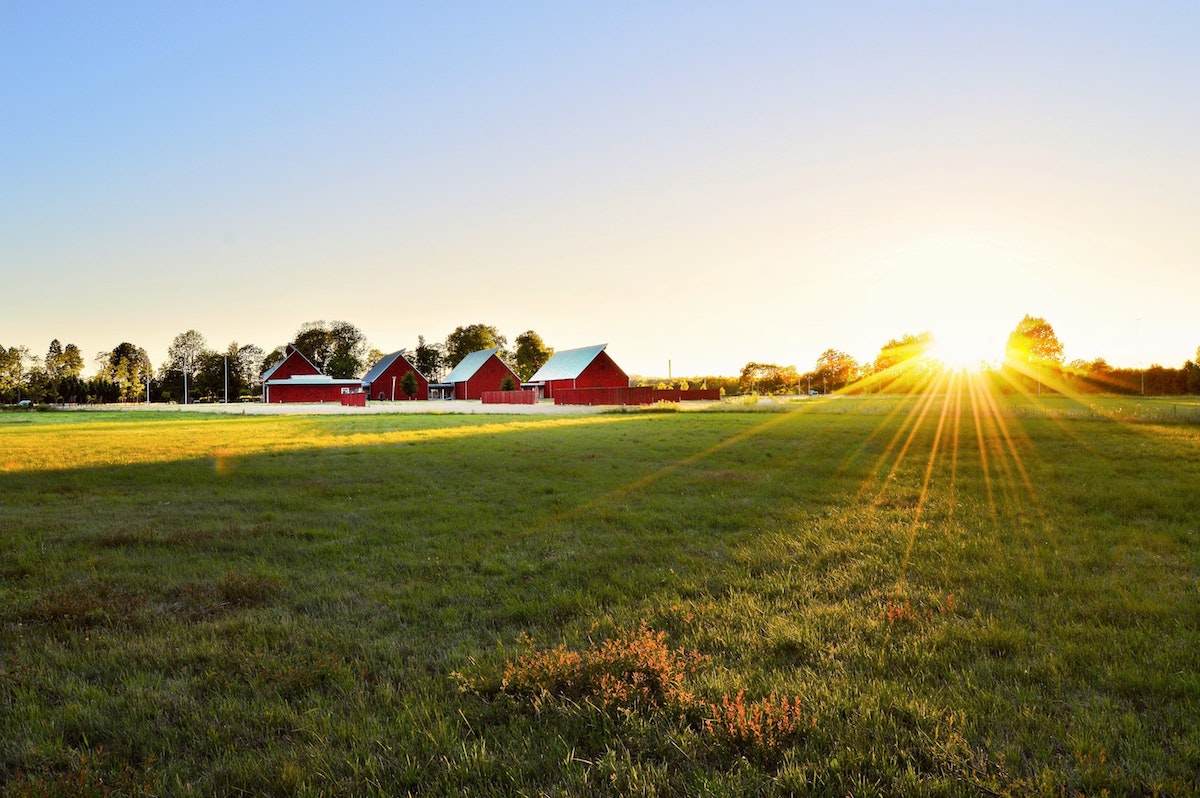
Everyone loves food. It sustains, nourishes, and satisfies us multiple times a day. How much of our day do we spend planning meals, shopping for groceries, or preparing food? Most likely you’re part of the 99% of America that eats food but doesn’t produce it. If that’s the case, you may not have a modern understanding of this ancient occupation. Here’s the truth behind 6 common farming myths you didn’t even realize you believe.
#1 Most farms are corporate-owned.
Some people think that our country gets the bulk of our food supply from large, corporate operations that don’t value the health of the animals or crops involved. This couldn’t be further from the truth. According to a USDA news release from March 2015, out of 2.1 million farms in the United States, 97% of them are family owned. The truth is, most farms are owned and operated by families that pass the farms down through generations. Large family farms produce the majority of the food that fills our grocery store shelves.
#2 All farmers are related to a farmer. It’s a family business.
Since the majority of farms are passed down through generations, some people might be led to believe that to be a farmer, you have to be born into it. This is one of the most widely believed farming myths, and it just isn’t the case. With the right education, skillset, and financial planning, anyone can be a farmer. If you weren’t fortunate enough to inherit any acreage, now is a great time to purchase land with mortgage rates as low as they are!
#3 You need to own hundreds of acres to make a living.

Just like with any other business, you’ll want to keep things small enough to manage when first starting a farm. If you try to do everything at once, disaster impends. Too much land will wear you (and your wallet) thin. Try to find a 20-30 acre property that is near other acreage you could purchase later on. Once you get the hang of things, you can expand. According to a report by US Farm Data®, the average farm in the United States is 444 acres. The average farm size has grown approximately two acres per farm each year since 2012, the number of farms is decreasing.
#4 Farming is old school and low tech.
Often farms are associated with old pickup trucks and rusty tractors, but let me tell you, the technology used in the farming world today is way beyond what most of us could even imagine. Artificial intelligence (AI) and autonomous machines are transforming the industry. Sophisticated computer vision, data science and deep learning algorithms are enabling farmers to collect enormous amounts of data and make informed decisions. This technology monitors fields and finds early symptoms of uneven emergence, weeds, nutrient deficiencies, disease or insect infestations, water damage and equipment issues. Not to mention the genetic engineering involved in seed creation. The bottom line is, farming has become extremely technologically advanced.

#5 The battle between organic farmers and conventional farmers isn’t worth fighting.
As we walk through the grocery store, we see the division right before our eyes. The “organic” produce over here and the “regular” produce over there. The separation of these two groups in the supermarket must mean ruthless competition, right? Not necessarily. Although organic and conventional farmers operate under differing business models, that doesn’t mean they don’t support one another. With the number of farmers dwindling, the people within this industry must support each other more than ever before.
Plus, adjacent farms have had to cooperate since the beginning, regardless of how they grow their crops. If one farmer sprays his fields, you can count on the wind and critters to carry some of those chemicals into other fields. Communication and collaboration among farmers is key.
#6 Farming is a man’s job.
In the last Census of Agriculture, the average American farmer was white, male, and nearing his sixties. The 2017 report collected data from 2.04 million farms and ranches. The report revealed a growing population of female farmers in general, but also an increase in the number of women in charge of their farming operations. In fact, female producers now make up 36 percent of farmers which is a 27% increase from 2012. People may think farming is a man’s job, but female farmers continue to prove that misconception wrong every day. Another of the many farming myths debunked.




